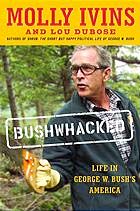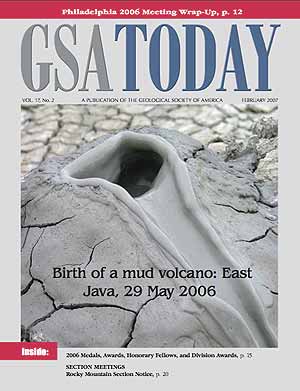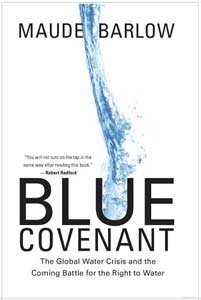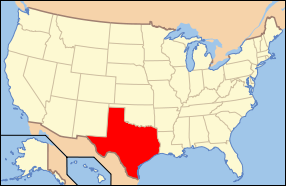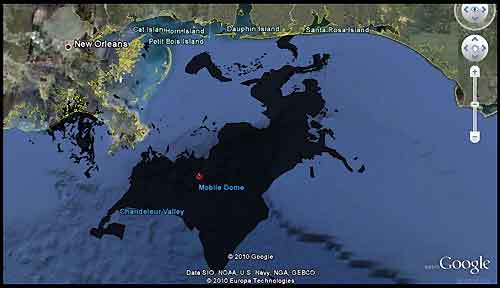Biblio
The official birthday of EPA is December 2, 1970. Like any other birth, EPA's needed progenitors, and a family tree stretching back for years. Surely no factor was more pivotal in the birth of EPA than decades of rampant and highly visible pollution. But pollution alone does not an agency make. Ideas are needed--better yet a whole world view--and many environmental ideas first crystallized in 1962.
That year saw the publication of Rachel Carson's Silent Spring, first in serial form in the New Yorker and then as a Houghton Mifflin best seller. This exhaustively researched, carefully reasoned, and beautifully written attack on the indiscriminate use of pesticides was not exactly light reading. Yet it attracted immediate attention and wound up causing a revolution in public opinion.
An inveterate bird-watcher, Carson derived her missionary zeal from her fear that fewer species of birds would be singing each spring unless pesticide poisoning was curtailed. The readers of her book, however, were less alarmed by the prospect of a "Silent Spring" than they were about people dying from any number of hidden poisons lurking in what had previously seemed a benign environment. It was not hard to wax hysterical after reading in Carson's book that "the common salad bowl may easily present a combination of organic phosphate insecticides" that could "interact" with lethal consequences to the unsuspecting salad muncher.
Silent Spring played in the history of environmentalism roughly the same role that Uncle Tom's Cabin played in the abolitionist movement. In fact, EPA today may be said without exaggeration to be the extended shadow of Rachel Carson. The influence of her book has brought together over 14,000 scientists, lawyers, managers, and other employees across the country to fight the good fight for "environmental protection..."
See: EPA History Web Page
See: The Origins of EPA
See: Carson, Rachel. (1962). Silent Spring. Boston: Houghton Mifflin, 2002. Print.
Molly Ivins has written about how the EPA was virtually dismantled as the Bush-Cheney administration handed over the role of oil and gas regulation to the oil and gas industry. While Governor of Texas, Bush allowed Texas industry to voluntarily comply with Federal Clean Air Regulations. Of the hundreds of Texas companies that might have volunteered, according to Ivins, only three did.
Bushwhacked by Molly ivins offers a critique of the presidency of George W. Bush, describing how the same flawed policies he used to govern Texas have affected health and safety standards, the economy, and the environment.
Paul Krugman. Strictly Business. Bushwhacked: Life in George W. Bush’s America Book Review. The New York Review of Books. November 20, 2003.
Chapter 9 of Bushwhacked, by Molly Ivins and Lou Dubose, entitled “Dick, Dubya, and Wyoming Methane,” tells you all you need to know about the Bush Interior Department.
We learn, in particular, that J. Steven Griles, the deputy secretary—and probably the real power in the department—has spent his career shuttling back and forth between being a government official and lobbying for the extractive industries.
And he has never worried much about ethical niceties—little things like recusing himself from decisions that affect his former clients. Moreover, Griles isn’t likely to be disciplined, even when he brazenly supports industry interests over the judgments of government experts.
After all, just about every other senior official at Interior, including Secretary Gale Norton, has a similar résumé. So it’s a very good bet that the new rules on mining-waste disposal don’t reflect a careful economic analysis of the pros and cons.
See: Ed Swartz: The Grass Isn't Growing
See: Stripping the West, a NOW Converstion with Bill Moyers.
See C-Span Book TV Oct. 2, 2004. Bushwacked: Life in George W. Bush's America. Read Chapter: "Dick, Dubya, and Wyoming Methane." (152)
See: U.S. Environmental Protection Agency (EPA): Hydraulic Fracturing Study (2010-2012)
Summary. In the month leading up to a baby's birth, the umbilical cord pulses with the equivalent of at least 300 quarts of blood each day, pumped back and forth from the nutrient- and oxygen-rich placenta to the rapidly growing child cradled in a sac of amniotic fluid. This cord is a lifeline between mother and baby, bearing nutrients that sustain life and propel growth.
Not long ago scientists thought that the placenta shielded cord blood — and the developing baby — from most chemicals and pollutants in the environment. But now we know that at this critical time when organs, vessels, membranes and systems are knit together from single cells to finished form in a span of weeks, the umbilical cord carries not only the building blocks of life, but also a steady stream of industrial chemicals, pollutants and pesticides that cross the placenta as readily as residues from cigarettes and alcohol. This is the human "body burden" — the pollution in people that permeates everyone in the world, including babies in the womb.
In a study spearheaded by the Environmental Working Group (EWG)S in collaboration with Commonweal, researchers at two major laboratories found an average of 200 industrial chemicals and pollutants in umbilical cord blood from 10 babies born in August and September of 2004 in U.S. hospitals. Tests revealed a total of 287 chemicals in the group. The umbilical cord blood of these 10 children, collected by Red Cross after the cord was cut, harbored pesticides, consumer product ingredients, and wastes from burning coal, gasoline, and garbage.

This study represents the first reported cord blood tests for 261 of the targeted chemicals and the first reported detections in cord blood for 209 compounds. Among them are eight perfluorochemicals used as stain and oil repellants in fast food packaging, clothes and textiles — including the Teflon chemical PFOA, recently characterized as a likely human carcinogen by the EPA's Science Advisory Board — dozens of widely used brominated flame retardants and their toxic by-products; and numerous pesticides.
Of the 287 chemicals we detected in umbilical cord blood, we know that 180 cause cancer in humans or animals, 217 are toxic to the brain and nervous system, and 208 cause birth defects or abnormal development in animal tests. The dangers of pre- or post-natal exposure to this complex mixture of carcinogens, developmental toxins and neurotoxins have never been studied.
Chemicals and pollutants detected in human umbilical cord blood
Source: Chemical analyses of 10 umbilical cord blood samples were conducted by AXYS Analytical Services (Sydney, BC) and Flett Research Ltd. (Winnipeg, MB).
Chemical exposures in the womb or during infancy can be dramatically more harmful than exposures later in life. Substantial scientific evidence demonstrates that children face amplified risks from their body burden of pollution; the findings are particularly strong for many of the chemicals found in this study, including mercury, PCBs and dioxins. Children's vulnerability derives from both rapid development and incomplete defense systems:
- A developing child's chemical exposures are greater pound-for-pound than those of adults.
- An immature, porous blood-brain barrier allows greater chemical exposures to the developing brain.
- Children have lower levels of some chemical-binding proteins, allowing more of a chemical to reach "target organs."
- A baby's organs and systems are rapidly developing, and thus are often more vulnerable to damage from chemical exposure.
- Systems that detoxify and excrete industrial chemicals are not fully developed.
- The longer future life span of a child compared to an adult allows more time for adverse effects to arise.
The 10 children in this study were chosen randomly, from among 2004's summer season of live births from mothers in Red Cross' volunteer, national cord blood collection program. They were not chosen because their parents work in the chemical industry or because they were known to bear problems from chemical exposures in the womb. Nevertheless, each baby was born polluted with a broad array of contaminants.
U.S. industries manufacture and import approximately 75,000 chemicals, 3,000 of them at over a million pounds per year. Health officials do not know how many of these chemicals pollute fetal blood and what the health consequences of in utero exposures may be.
Had we tested for a broader array of chemicals, we would almost certainly have detected far more than 287. But testing umbilical cord blood for industrial chemicals is technically challenging. Chemical manufacturers are not required to divulge to the public or government health officials methods to detect their chemicals in humans. Few labs are equipped with the machines and expertise to run the tests or the funding to develop the methods. Laboratories have yet to develop methods to test human tissues for the vast majority of chemicals on the market, and the few tests that labs are able to conduct are expensive. Laboratory costs for the cord blood analyses reported here were $10,000 per sample.
A developing baby depends on adults for protection, nutrition, and, ultimately, survival. As a society we have a responsibility to ensure that babies do not enter this world pre-polluted, with 200 industrial chemicals in their blood. Decades-old bans on a handful of chemicals like PCBs, lead gas additives, DDT and other pesticides have led to significant declines in people's blood levels of these pollutants. But good news like this is hard to find for other chemicals.
The Toxic Substances Control Act, the 1976 federal law meant to ensure the safety of commercial chemicals, essentially deemed 63,000 existing chemicals "safe as used" the day the law was passed, through mandated, en masse approval for use with no safety scrutiny. It forces the government to approve new chemicals within 90 days of a company's application at an average pace of seven per day. It has not been improved for nearly 30 years — longer than any other major environmental or public health statute — and does nothing to reduce or ensure the safety of exposure to pollution in the womb.
Because the Toxic Substances Control Act fails to mandate safety studies, the government has initiated a number of voluntary programs to gather more information about chemicals, most notably the high production volume (HPV) chemical screening program. But these efforts have been largely ineffective at reducing human exposures to chemicals. They are no substitute for a clear statutory requirement to protect children from the toxic effects of chemical exposure.
In light of the findings in this study and a substantial body of supporting science on the toxicity of early life exposures to industrial chemicals, we strongly urge that federal laws and policies be reformed to ensure that children are protected from chemicals, and that to the maximum extent possible, exposures to industrial chemicals before birth be eliminated. The sooner society takes action, the sooner we can reduce or end pollution in the womb.
See: World-Renowned Scientist Dr. Theo Colborn on the Health Effects of Water Contamination from Fracking
See: Fracking: Implications for Human and Environmental Health
Abstract
On 29 May 2006, an eruption of steam, water, and, subsequently, mud occurred in eastern Java in a location where none had been previously documented.
This “pioneer” mud eruption (the first to occur at this site) appears to have been triggered by drilling of overpressured porous and permeable limestones at depths of ~2830 m below the surface.
We propose that the borehole provided a pressure connection between the aquifers in the limestones and overpressured mud in overlying units.
As this was not protected by steel casing, the pressure induced hydraulic fracturing, and fractures propagated to the surface, where pore fluid and some entrained sediment started to erupt.
Flow rates remain high (7000–150,000 m3 per day OR 1,849,204 gallons to 22,500,000,000 gallons per day) after 173 days of continuous eruption (at the time of this writing), indicating that the aquifer volume is probably significant. A continued jet of fluid, driven by this aquifer pressure, has caused erosion and entrainment of the overpressured mud.
As a result, we predict a caldera will form around the main vent with gentle sag-like subsidence of the region covered by the mud flow and surrounding areas. The eruption demonstrates that mud volcanoes can be initiated by fracture propagation through significant thicknesses of overburden and shows that the mud and fluid need not have previously coexisted, but can be “mixed” within unlithified sedimentary strata.
See: Wikipedia | Sidoarjo mud flow
In February 2010, a group led by experts from Britain's Durham University said new clues bolstered suspicions the catastrophe was caused by human error. In the peer-reviewed journal, Marine and Petroleum Geology, Professor Richard Davies, of the Centre for Research into Earth Energy Systems (CeREES), said that drillers, looking for gas nearby, had made a series of mistakes.
They had overestimated the pressure the well could tolerate, and had not placed protective casing around a section of open well. Then, after failing to find any gas, they hauled the drill out while the hole was extremely unstable. By withdrawing the drill, they exposed the wellhole to a "kick" from pressurised water and gas from surrounding rock formations. The result was a volcano-like inflow that the drillers tried in vain to stop.
In the same Marine and Petroleum Geology journal, the group of geologists and drilling engineers refuted the allegation showing that the “kick” maximum pressure were too low to fracture the rock formation.
The well pressure analysis based on credible data showed that the well is stronger than the maximum pressure exerted on the well. This implied that the hydro fracturing hypothesis is likely to be incorrect.
See: BBC News. 2007. "Drilling blamed for Java mud leak." BBC News | Asia-Pacific. January 24.
See: Alexis Madrigal. 2010. "Mud Volcano Was Man-Made, New Evidence Confirms". Wired | Science. February 11.
Sawolo, N., E. Sutriono, B. P Istadi, and A. B Darmoyo. 2009. "The LUSI mud volcano triggering controversy: Was it caused by drilling?" Marine and Petroleum Geology 26, no. 9: 1766–1784.
See: Sawolo, N., Sutriono, E., Istadi, B., Darmoyo, A.B. (2010). "Was LUSI caused by drilling? – Authors reply to discussion". Marine & Petroleum Geology 27:1658–1675.
Most Texans don’t know what the Texas Railroad Commission is or does. In 2007, one Texas blogger changed that: Sharon Wilson. Wilson’s reporting on the injection well drilling in the Barnett Shale region and its impact on the water quality and the environment in Wise County and surrounding areas has been exceedingly important to bringing wider attention to the dangers this practice poses across the state.
Wilson has nearly single-handedly stood up to large oil companies and made the companies and state agencies–including the Texas Railroad Commission–take notice. Relentless in her drive to educate the public and elected officials to the damage being done to the Texas environment, Wilson’s investigative reporting and blogging is worthy of recognition.
Digital landscape of the pristine Upper Delaware Watershed - before and after gas drilling.
A slow quiet simulated time lapse on what can happen to the scenic Delaware watershed as gas drilling proceeds in Pennsylvania.
Bruce Baizel. Testimony presented to the Committee on Environmental Protection, James F. Gennaro, Chair, Council of the City of New York, September 10, 2008. Earthworks Publications. Durango, CO.
"My testimony will first address the three main risks to water posed by gas development: well drilling and production, hydraulic fracturing and transportation of fluids to and from the wellsite. I will then briefly describe some specific incidents that illustrate these risks in a number of different states. Then, I will briefly discuss the current New York regulations most applicable to the risks associated with gas development. Finally, I will present some of the approaches that other municipalities and states have developed to try to address these risks."
Bruce Baizel is Senior Staff Attorney for the The Oil and Gas Accountability Project, a program of Earthworks, P.O. Box 1102, Durango, Colorado 81302.
See: Lustgarten (2009) "Buried Secrets: Gas Drilling’s Environmental Threat - ProPublica"
The Barnett Shale - the oldest producing well in the barnett shale is still producing from its primary pressure created by the frac job by Sanders and Son.
See the true cost of gas!
Natural gas is just another dirty fossil fuel. for more info see: Bluedaze
A [Barnett Shale] drilling rig operating for 3 months has the same impact as a city of 4,000 people—water use, solid waste generation, air emissions and traffic.
~David Burnett, Dir. Global Petroleum Research Institute
This is an expert's view of our worldwide water crisis. References to facts are found in the back of the book making for an uncluttered read in language everyone can understand. Follow some of the stories about the World Bank and many other reversals of corporate efforts to privatize what ought to be a basic human right: clean water.
Hydraulic fracturing uses five million gallons per well with tens of thousands of wells planned for the Marcellus Shale. Water resources in "shale plays" are already threatened by mining operations and weak environmental justice. These invaluable resources need public protection. Volunteer regulation does not work.
See: Maude Barlow. Feb. 25, 2008. Foreign Policy In Focus. "The Global Water Crisis and the Coming Battle for the Right to Water."
See: Amy Goodman and Juan Gonzalez. "From Melting Glaciers to Structural Adjustment: Maude Barlow on the Need for Water Justice." Democracy Now! April 22, 2010.
See: Flow - The War Between Public Health and Private Interests
See: WATER: Rulings Restrict Clean Water Act, Foiling E.P.A.
Mixplex Environmental Justice Blogroll Note
On Martin Luther King Day (MLK Day Jan. 17, 2011), America deserves to be reminded that hard on the trail of King's Civil Rights legacy in Alabama is the way Alabama's poor have been victimized by negligent environmental law.
The daily posts of Max Shelby and his group, blogging in Alabama about the environment, politics, big business and corruption are some of the boldest independent voices writing in the U.S. on environment justice today.
If you're not following writers like Shelby's Vincent Alabama Confidential, Sharon Wilson's Bluedaze, Shelly Thomas on Futurism Now, Ken Ward Jr.'s Coal Tattoo, the late Karen Korell's Splashdown, Bill Wolfe's Wolfenotes, Amy Mall's blog on NRDC Switchboard, Rick Piltz on Climate Science Watch, and the many other personal and professional authors, videomakers, humorists, and journalists located by scrolling through these double pages: Background, Companies, Experts, Government, Legal, Opinions and Press; you are missing out on the most entertaining, free, participatory, First Amendment, punch the bully in the nose shows in this nation.
This writing takes courage and sacrifice and I want to recognize them all here on MLK Day through Shelby's 2010 post as the proudest way that we demonstrate to the World that we will manage our industries without the sacrifice of liberty by ensuring that our laws are fair and just to all. (Neil Zusman, 2011-01-14.)
BARD's (Business Alliance for Responsible Development) "Big Mule" Drummond Coal Sued--Part II
We left off with issues raised regarding Region 4 and the questionable results (in contrast to the SE study results) of their monitoring program implemented after the recent lawsuit was filed on behalf of the African-American residents who claim to be devastated by serious health issues from the toxic discharges from Drummond Company, Inc.
Why is it this particular group of citizens are usually the ones most harmed? "Big Mule" philosophies carry through to federal agencies here in the land of cotton:
Nearly four decades of EPA Region 4's harmful and discriminatory decisions have turned too many black communities into the dumping grounds, lowering nearby residents' property values, stealing their wealth, and exposing them to unnecessary environmental health risks.
Big business and politicians play a smoke and mirror game of corporate welfare that is disadvantageous to their citizens by cutting "economic progress deals" with each other that are designed to line both their pockets and strip communities of the right to exist in a clean environment.
In our opinion, that is exactly what is going on with big businesses such as Drummond and the State of Alabama.
See: A search for Mixplex articles mentioning Alabama
See: Frack MixPlex Gives Vincent Alabama Confidential and Others A Much Appreciated "Attaboy!"
And we thank them for it, along with their hard work on advancing issues that we all should care about. Kudos to our fellow like-minded bloggers and the mighty keyboards they sit behind. We would add the work of Dr. Robert Bullard as high on our own list, because without him there would be no modern day environmental justice movement.
The Barnett Shale and Marcellus Shale have similar geological properties.
The Barnett Shale is known as a "tight" gas reservoir, indicating that the gas is not easily extracted. The shale is very hard, and it was virtually impossible to produce gas in commercial quantities from this formation until recent improvements were made in hydraulic fracturing technology and horizontal drilling, and there was an upturn in the natural gas price.
Future development of the field will be hampered in part by the fact that major portions of the field are in urban areas, including the rapidly growing Dallas-Fort Worth Metroplex.
Some local governments are researching means by which they can drill on existing public land (e.g., parks) without disrupting other activities so they may obtain royalties on any minerals found, whereas others are seeking compensation from drilling companies for damage to roads caused by overweight vehicles (many of the roads are rural and not designed for use by heavy equipment). In addition, drilling and exploration have generated significant controversy.
See the Notes and External Links on this Ft. Worth, Texas Shale deposit using fracking since 2005.
Also see Sharon Wilson, Bluedaze Blog.
Please note that information taken from Wikipedia should be verified using other, more reliable sources. It is a good place to start research, but because anyone can edit Wikipedia, we do not recommend using it in research papers or to obtain highly reliable information.
The Barnett Shale Energy Education Council (BSEEC) is a gas and oil industry sponsored community resource that provides information to the public about gas drilling and production in the Barnett Shale region in North Texas.
Recent release (July 14, 2010):
The Barnett Shale Energy Education Council (BSEEC) today released the results of its air quality testing project which showed there are no harmful levels of benzene and other compounds being emitted from natural gas sites tested in Fort Worth and Arlington City Council District 2.
Slate is a general readership online magazine offering analysis and commentary on politics, news, and culture. It was bought by the Washington Post from Microsoft in 2004.
In the last half-century, three major oil spills have significantly marked American politics—the 1969 Santa Barbara, Calif., spill, the 1989 Exxon Valdez spill, and now the 2010 spill in the Gulf.
They have a striking thing in common: Each occurred after the oil industry successfully resisted demands for safety improvements that would have greatly reduced the damage the spills caused.
The Valdez spill invigorated institutional investors and environmental activists to press companies to adopt the Ceres Principles, a new code of corporate environmental conduct. The accident also brought the passage of the Oil Pollution Act of 1990, which barred the Exxon Valdez ship and others involved in oil spills from operating in Prince William Sound.
See: CiCi O'Donnell. July/August 2010. The Loma Prietan | Sierra Club. "Forty-one Years Later, Have Things Changed?". Section titled, "Political Fallout." Halfway down the page: Eventually, Secretary of the Interior Walter J. Hickel admitted partial responsibility for the permit that allowed Union Oil to use the inferior casing that caused the leak.
See: Pew Environment Group (PEG) Factsheet: Industry Opposition to Government Regulation (PDF), October 14, 2010. Article explains the industrial resistance to govenment regulation in the fields of acid rain, asbestos, airbags, catalytic converters, seat belts, lead paint, etc.
For decades, corporations and their trade associations have opposed regulations aimed at protecting human health and the environment. Industry has repeatedly argued that the cost of complying is too high, the benefits to society don’t justify the investment, or the regulations will cost jobs. When regulations have been implemented, however, the compliance costs have proved to be less and the benefits greater than industry officials predicted.
See: National Commission on the BP Deepwater Horizon Oil Spill and Offshore Drilling | Mixplex
The potential consequences for the environment and society of BP's funded research on biofuels at Berkeley are deeply disturbing. Many scientists have long predicted that the large-scale industrial boom in biofuels will be disastrous for farmers, the environment and consumers and now marine ecosystems.
The Daily Californian is an independent, student-run newspaper.
One of the few campus newspapers in the country that is completely independent from the university it covers, the Daily Cal supports itself entirely from advertising revenue and does not receive equipment resources or any form of financial support from the university or the Associated Students of the University of California.
See: Investigate Research - Fri, Oct 22, 2010.
See: Report: UC Berkeley Research Influenced Too Heavily by BP - Mon, Oct 18, 2010.
See: Discussion of Bias Essential in Private Funding Debate - Mon, Aug 16, 2010.








